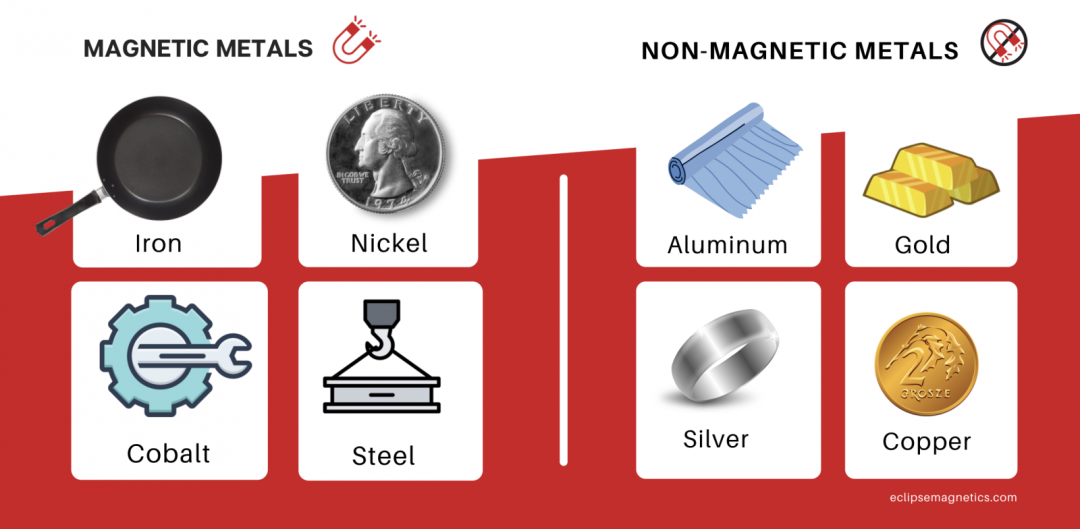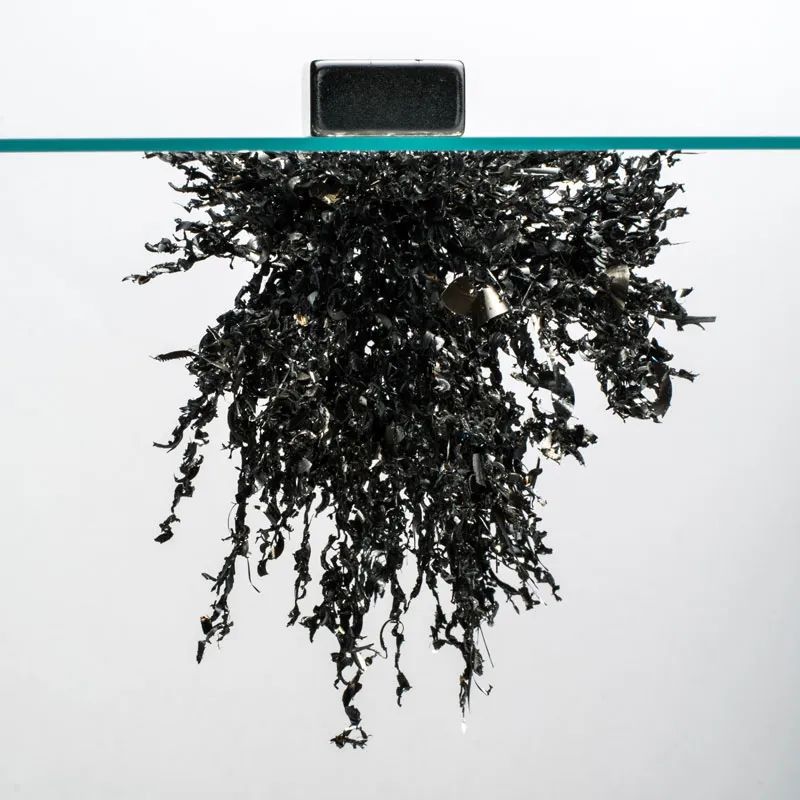knowledge
Your current location:Home> Knowledge
Distinction between magnets, magnetic metals and non-magnetic metals(2)
Can the magnet maintain its strength permanently?
As long as the magnet is kept away from factors that have a negative impact on its magnetism (such as power lines, other magnets, high temperature, etc.), theoretically it will maintain its magnetism permanently.
Which metals are magnetic?
Magnetic fields can interact with metals in many ways. It all depends on the internal structure of the material. There are three main types of metals that interact with magnetic fields:
Ferromagnetism
Paramagnetism
Diamagnetism
Magnets are strongly attracted to ferromagnetic metals, while others are not. Although paramagnetic metals can also attract magnets, their attraction is very weak. On the other hand, the diamagnetic material shows weak repulsive force when it is close to the magnet. Only ferromagnetic metals are considered truly magnetic.

Picture - magnetic and non-magnetic metals (note that aluminum and copper do interact with changing magnetic fields) List of magnetic metals Some of the most famous magnetic metals are listed below. Some of these materials are always magnetic. However, some materials, such as stainless steel, do not exhibit magnetism unless they contain a specific chemical composition. iron Ferromagnetic metals, such as iron, are well known. In fact, it is the most ferromagnetic metal. It is they that endow the earth with magnetism and form an important part of the core. Therefore, the earth itself acts as a permanent magnet. There are many factors affecting ferromagnetism. In addition to the atomic electron spin, its crystal structure also plays an important role. If the crystal structure is lost, iron will become a non-magnetic metal. Iron has different properties according to its crystal structure. Body centered cubic (BCC) structure of iron α- Fe structure makes it ferromagnetic. At the same time, it is in face centered cubic (FCC) γ- The Fe structure shows no magnetism. For example, β- The Fe structure shows paramagnetism.
Figure - iron filings in magnetic field nickel Nickel is also a common magnetic metal with ferromagnetic properties. Its compounds also exist in the earth's core. Nickel has traditionally been used to make coins. Today, nickel is widely used in batteries, coatings, kitchen equipment, telephones, buildings, transportation and jewelry. Ferronickel is a key component of stainless steel and is made of nickel. Nickel is also part of the alnico magnet (made of aluminum, nickel and cobalt). cobalt Cobalt is a ferromagnetic metal. In the past 100 years, cobalt has been widely used because of its excellent magnetic properties. Cobalt can be used to make soft and hard magnets. Compared with other soft magnets, cobalt based magnets have many advantages. In particular, their saturation point is very high, and their Curie temperature is 950-990 ° C. Therefore, they can be used at high temperatures (up to 500 ° C). Cobalt alloys are widely used in hard disks, wind turbines, nuclear magnetic resonance imagers, motors, actuators and sensors. steel Steel also exhibits ferromagnetism due to its iron content. In most cases, steel is attracted by magnets. Therefore, permanent magnets can also be made of steel. For example, the iron content of EN c15d steel is between 98.81 and 99.26%. This steel has a high iron content. Therefore, the ferromagnetic properties of iron are transferred to steel. stainless steel Some stainless steels are magnetic, others are not. Alloy steel becomes stainless steel by adding chromium to the alloy. The composition and molecular structure of ferritic and martensitic stainless steels make them magnetic. On the other hand, austenitic steels do not exhibit ferromagnetism due to their molecular structure. Therefore, it can be used in MRI. Different nickel content is the main cause of magnetic difference. The strengthening of oxide layer improves the corrosion protection, but also changes the structure of stainless steel. Rare earth metals In addition to the metals mentioned above, some rare earth compounds also have ferromagnetism. Gadolinium, samarium and neodymium are magnetic rare earth metals. By combining the above metals with iron, nickel and cobalt, magnets with different properties can be manufactured. Magnets such as these have specific characteristics required for certain applications. For example, samarium cobalt magnets are used in turbomachinery and high-performance motors. Which metals are not magnetic? Only a few metals in the periodic table are magnetic. Other common metals are nonmagnetic. Here are a few examples. List of non-magnetic metals aluminium Aluminum has the same crystal structure as lithium and magnesium, making it nonmagnetic. All three materials are paramagnetic metals. Although aluminum corrosion can occur in many ways, it is inherently resistant to environmental corrosion. Coupled with its light weight, it has become a useful metal in many industries. gold Like most metals, gold is an diamagnetic metal. All diamagnetic metals, including gold, have weak magnetic attraction to pure magnets. silver Silver is another nonmagnetic metal. The diamagnetism of silver makes it nonmagnetic. As we all know, silver and other metals have the strongest conductivity, thermal conductivity and reflectivity. When heated, it becomes very soft and malleable. In addition, it has high corrosion resistance. Today, it is widely used in the manufacture of jewelry and money. It is also used to make solar panels and water filters. copper Copper itself is not magnetic, but it interacts with magnets in some way (e.g., eddy currents). Power plants use this property of copper to generate electricity. Using this principle, metal detectors can also detect non-magnetic metals such as gold and silver. However, such interactions are clearly insufficient to meet most practical purposes and limit the number of potential applications. 


